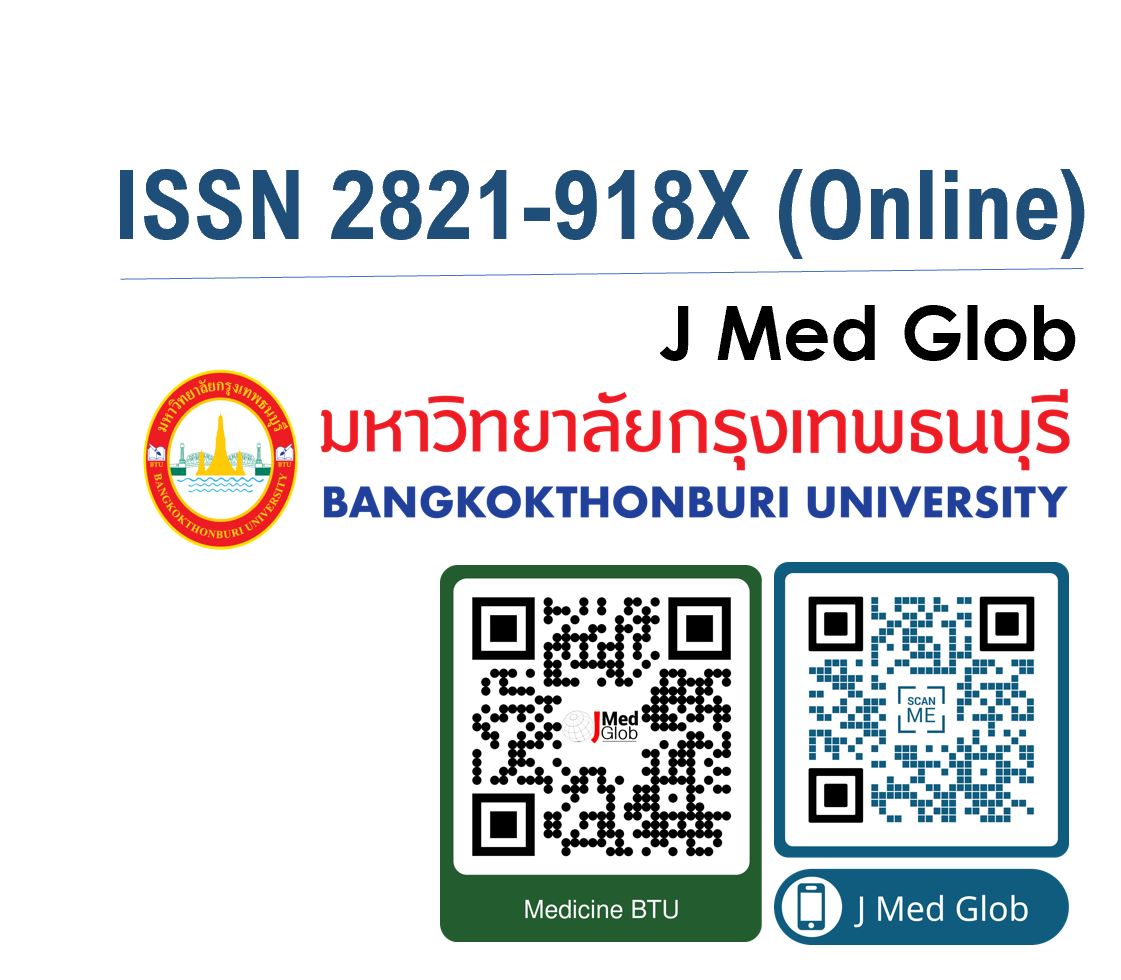Survey of tobacco consumption behavior and factors affecting smoking behavior of students at Bangkokthonburi University
Keywords:
Smoking behavior, Tobacco consumption, Factors affecting smoking behaviorAbstract
Tobacco consumption is a significant risk factor that affects health, contributing to various diseases, especially non-communicable diseases such as cancer, heart disease, and stroke. Smoking also negatively impacts oral health, including teeth and gums. The researchers aimed to study tobacco consumption behavior and the factors influencing smoking behavior among students at Bangkokthonburi University. Adolescents experience changes in physical, mental, and social aspects, with fluctuating moods and stress. If not managed properly, they may turn to smoking to relieve stress and may hold misconceptions about the effects of smoking. The survey was conducted with 583 respondents, and 478 of them provided complete data for analysis. Data analysis using SPSS revealed that the most selected tobacco product was e-cigarettes, with 52.2% of respondents, an average score of 4.34, and a standard deviation (SD) of 0.78. This indicated that the majority of respondents agreed with the establishment of designated smoking areas. Additionally, most respondents were aware of the dangers of traditional cigarettes, but a smaller number were unaware that e-cigarettes are also harmful. As a result, their attitude led most of them to choose e-cigarettes over traditional cigarettes. The findings of this study provide essential data that can be used in planning preventive measures and solutions to smoking problems among adolescents, as well as in promoting awareness of the dangers of tobacco use in society.
References
Bai S, Wang T, Tian Z, Cao K, Li J. Facile preparation of porous biomass charcoal from peanut shell as adsorbent. Scientific Reports. 2020;10:15845.
Mishra VK, Srivastava S, Muhammad T, Murthy PV. Relationship between tobacco use, alcohol consumption and non-communicable diseases among women in India: evidence from National Family Health Survey-2015-16. BMC Public Health. 2022;22:713.
Thakur J, Garg R, Narain J, Menabde N. Tobacco use: A major risk factor for non communicable diseases in South-East Asia region. Indian J Public Health. 2011;55:155-60.
Glantz S, Gonzalez M. Effective tobacco control is key to rapid progress in reduction of non-communicable diseases. Lancet (London, England). 2012;379:1269-71.
Oyston J. A fresh approach to tobacco control: raising the minimum legal age for access. Canadian Med Assoc J. 2017;189:E293-e4.
Kessel Schneider S, Buka SL, Dash K, Winickoff JP, O'Donnell L. Community reductions in youth smoking after raising the minimum tobacco sales age to 21. Tobacco Control. 2016;25:355-9.
Aungkulanon S, Pitayarangsarit S, Bundhamcharoen K, Akaleephan C, Chongsuvivatwong V, Phoncharoen R, et al. Smoking prevalence and attributable deaths in Thailand: predicting outcomes of different tobacco control interventions. BMC Public Health. 2019;19:984.
Witvorapong N, Vichitkunakorn P. Investigation of tobacco and alcohol co-consumption in Thailand: A joint estimation approach. Drug Alcohol Review. 2021;40:50-7.
Hammond D. Smoking behaviour among young adults: beyond youth prevention. Tobacco Control. 2005;14:181-5.
Dalhamn T. In vivo and in vitro ciliotoxic effects of tobacco smoke. Arch Environ Health. 1970;21:633-4.
Park-Lee E, Ren C, Cooper M, Cornelius M, Jamal A, Cullen KA. Tobacco Product Use Among Middle and High School Students United States, 2022. MMWR Morb Mortal Wkly Rep. 2022;71:1429-35.
Gülşen A, Uslu B. Health Hazards and Complications Associated with Electronic Cigarettes: A Review. Turkish Thoracic J. 2020;21:201-8.
Downloads
Published
How to Cite
Issue
Section
License
Copyright (c) 2025 Journal of Medical Globalization

This work is licensed under a Creative Commons Attribution-NonCommercial 4.0 International License.








